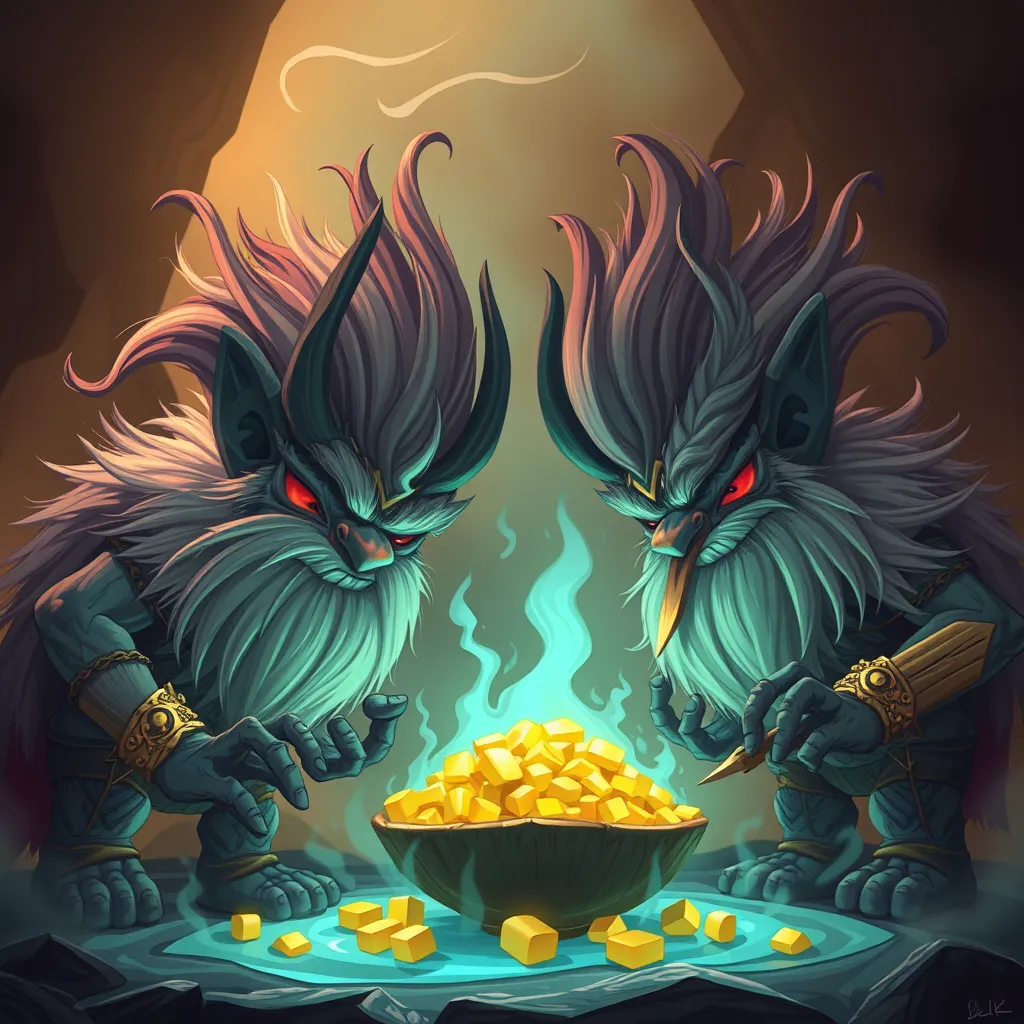Lamia’s Mirror: Exploring the Serpent Woman’s Connection to Narcissism and Self-Reflection
I. Introduction
The figure of Lamia in mythology has long captivated the imagination, representing a complex interplay of beauty, desire, and tragedy. In ancient Greek lore, Lamia is often depicted as a serpent woman, a creature of both allure and horror. Her mythos resonates deeply with themes of narcissism and self-reflection, serving as a poignant reminder of the dangers of excessive self-focus.
This article aims to explore the intersection of Lamia’s story with the concepts of narcissism and self-reflection. By delving into her narrative, we can better understand how her transformation and self-perception encapsulate the complexities of narcissistic behavior.
II. The Myth of Lamia: A Historical Perspective
Lamia’s origins can be traced back to ancient Greek mythology, where she was often portrayed as a beautiful queen of Libya. According to various myths, Lamia was transformed into a monster after losing her children to Zeus’s jealousy. This transformation is central to her narrative, symbolizing the tragic consequences of love and loss.
Key narratives surrounding Lamia’s character often emphasize her insatiable hunger for vengeance against the children of others, reflecting her deep-seated pain and jealousy. The serpent, a significant symbol in her mythos, represents both her allure and her monstrous nature, embodying the duality of beauty and danger.
- Lamia’s beauty, once a source of admiration, becomes a weapon of destruction.
- The serpent symbolizes transformation and the hidden dangers beneath an attractive exterior.
III. Understanding Narcissism: Psychological Insights
Narcissism is characterized by an excessive preoccupation with oneself, often manifesting as an inflated sense of self-importance and a lack of empathy for others. Key characteristics of narcissism include:
- A strong need for admiration.
- Grandiosity in thoughts and behaviors.
- A tendency to exploit relationships for personal gain.
Self-reflection plays a dual role in narcissistic behavior. While it can lead to personal growth, it can also reinforce a distorted self-image. Historical figures like Narcissus, from whom the term originates, and even contemporary examples highlight the destructive aspects of narcissism.
IV. The Symbolism of Mirrors in Mythology
Mirrors have long been symbolic tools in various cultures, representing self-reflection and identity. In mythology, mirrors often reveal deeper truths, exposing not just physical appearances but also internal conflicts and desires.
The cultural significance of mirrors can be seen in numerous myths, where they serve as gateways to understanding oneself. In Lamia’s narrative, the mirror symbolizes her confrontation with her transformed identity, serving both as a reflection of her beauty and her monstrous self.
V. Lamia as a Representation of Narcissism
Through a psychological lens, Lamia’s traits can be analyzed to reveal her narcissistic tendencies. Her transformation into a serpent not only alters her physical form but also impacts her self-perception. The once-beautiful queen becomes consumed by her desire for vengeance and validation, blurring the lines between self-love and self-destruction.
Lamia’s relationships with others, particularly with her victims, reflect her narcissism. Her need to assert dominance and inflict pain on others is indicative of a deep-seated insecurity and a desperate attempt to reclaim her lost identity.
VI. Self-Reflection and the Consequences of Narcissism
Self-reflection can be a double-edged sword. On one hand, it can lead to greater self-awareness and growth; on the other, it can spiral into obsession and self-destruction. Lamia’s journey illustrates the dangers of excessive self-focus, highlighting how her obsessive thoughts lead to her downfall.
The emotional and social implications of narcissistic behavior are profound. For Lamia, her inability to move beyond her grief and loss isolates her from others, ultimately leading to her tragic fate.
VII. Contemporary Parallels: Lamia’s Legacy in Modern Culture
The legacy of Lamia continues to resonate in contemporary literature and media. References to her character can be found in various works that explore themes of beauty, jealousy, and vengeance. Her story serves as a cautionary tale, warning against the perils of narcissism and the obsession with self-image.
In today’s society, discussions surrounding self-image and narcissism are more relevant than ever. Social media platforms often amplify these themes, reflecting a modern obsession with appearances and validation.
VIII. Conclusion
In conclusion, the connections between Lamia, narcissism, and self-reflection paint a vivid picture of the dangers inherent in excessive self-focus. Lamia’s tragic story serves as a reminder of the importance of balance in self-perception and the potential consequences of allowing narcissistic tendencies to consume one’s life.
As we reflect on Lamia’s narrative, it encourages us to examine our own relationships with self-image and narcissism. Striving for a healthier balance in self-reflection can lead to more fulfilling relationships with ourselves and others.



